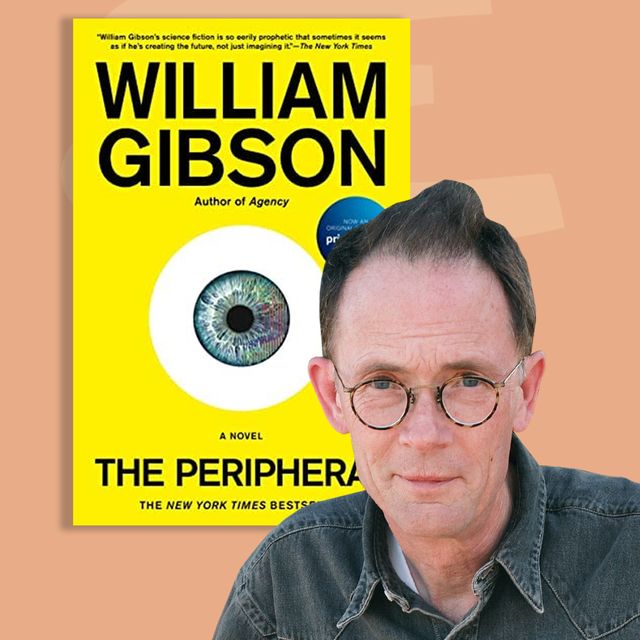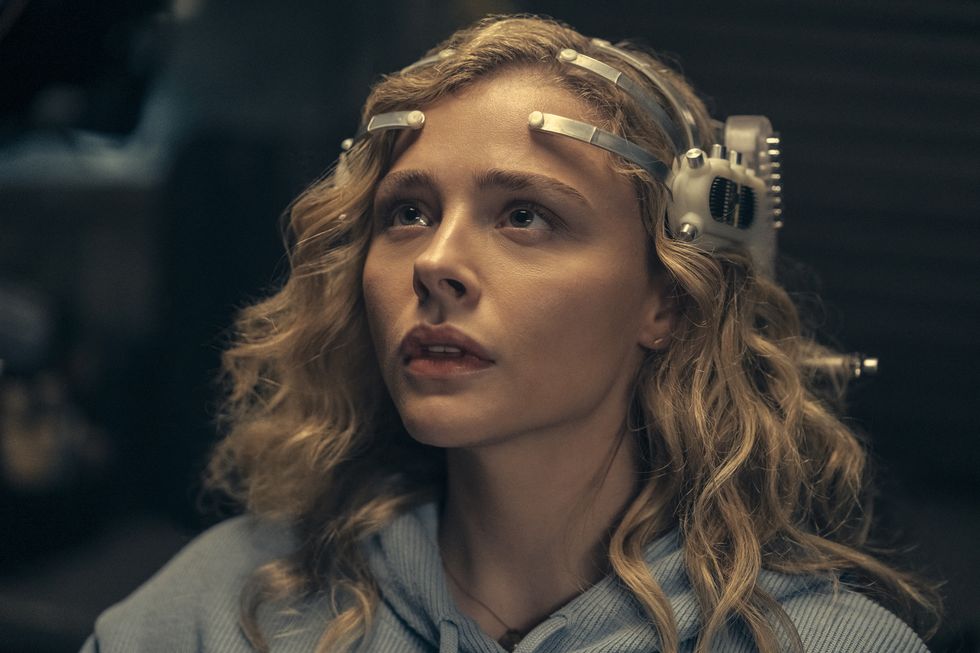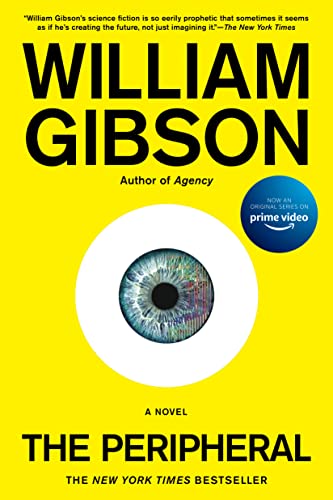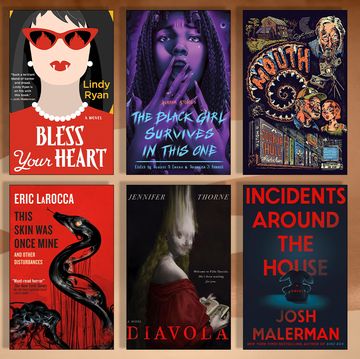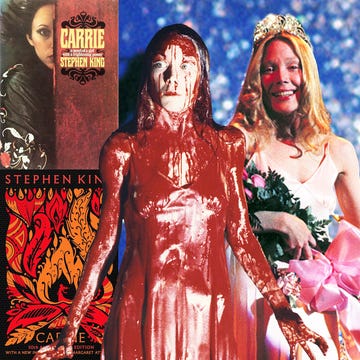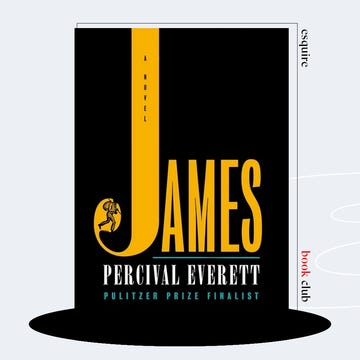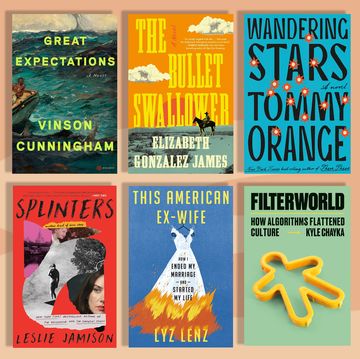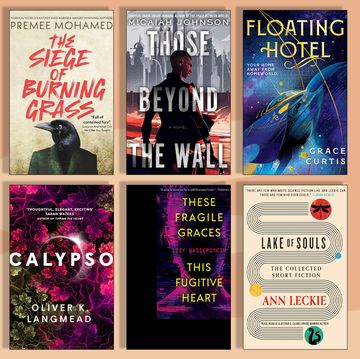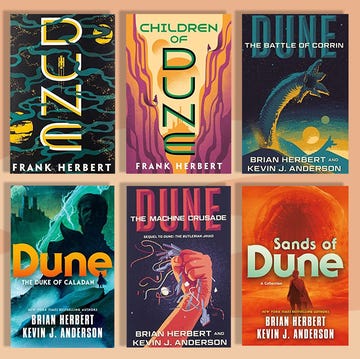When William Gibson saw the first twenty minutes of Blade Runner in 1982, he was depressed. Having written “one-third” of what would become his debut novel, Gibson saw the groundbreaking Ridley Scott film and assumed he was “done for.” Before he could invent cyberpunk, it seemed like Blade Runner had beat him to it. Although Gibson finished his novel Neuromancer, which was eventually published in 1984, he worried he would be accused of stealing “my visual texture from this astonishingly fine-looking film.” But Blade Runner didn’t ruin Gibson’s Neuromancer, or vice versa. Instead, while Blade Runner brought a cinematic science fiction language into the mainstream, Gibson did the literary equivalent for science fiction novels. 38 years after Neuromancer permanently transformed science fiction, cyberpunk’s influence is everywhere. Today, the great science fiction of the 21st century owes a huge debt not to Blade Runner, but to William Gibson.
The latest proof of cyberpunk’s lasting impact on science fiction is in the new Amazon Prime series, The Peripheral, not coincidentally based on William Gibson’s 2014 novel of the same name. Initially focusing on brother-and-sister gamers-for-hire, Burton (Jack Reynor) and Flynne Fisher (Chloë Grace Moretz), The Peripheral partially takes place in a very near-future America, with only slightly more advanced 3-D printers, e-bikes, and hyper-realistic virtual reality gaming. While Ready Player One imagined interconnected gaming as a literal oasis in the midst of real-world slums, The Peripheral takes a more realistic approach: massive virtual reality systems and games won’t unite humanity, because the problems of poverty and brutal classism are still crushingly pervasive. However, these systems will allow for time travel, just not the kind you’ve seen before. As with other Gibson books, none of this technology will save humanity, but the tech isn’t the enemy either. “It’s the purest form of speculative fiction I’ve ever read,” Jack Reynor, co-star of The Peripheral, tells Esquire. “I had loved science fiction and cyberpunk, and I loved Neuromancer, but I had never read The Peripheral before getting this part. And it blew me away.”
Opening in the shadows of a future Japanese metropolis called Chiba City, Neuromancer is mostly focused on the exploits of Henry Dorsett Case, a hacker who is sometimes called a “cowboy.” As the novel begins, Case has hit the skids and takes a job from Molly Millions, a mercenary-for-hire who needs Case for a cyberheist. The action pits them against an AI called Wintermute and takes them through a massive interconnected future city called “The Sprawl,” which basically covers everything from Boston to Atlanta. This caper even takes them to an orbital habit called Freeside, where they deal not only with AI, but with a very old and powerful oligarchy called the Tessier-Ashpools. Combining the feeling and pace of a hardboiled crime novel with the avant-garde style of William S. Burroughs (one of Gibson’s heroes), the plot of Neuromancer matters almost as much as the prose itself. As many have pointed out, the novel contains one of the best and moodiest opening lines of all time: “The sky above the port was the color of television, tuned to a dead channel.”
While the cyberpunk vibes of Neuromancer and Blade Runner scan as anachronistic now (payphones!), The Peripheral is about as grounded as contemporary science fiction gets. Both the novel and the new TV series contain the essential ingredient of all great cyberpunk: a mash-up of high-tech and hard living. If there’s a description we can all agree upon that defines cyberpunk, it’s probably that exact collision, with a dash of noir grit. But what is cyberpunk exactly, and how did it transform all of science fiction?
Like many great artists at the center of artistic movements, William Gibson did not invent the label “cyberpunk,” and as early as 1986, he actively disliked the term, saying it was a “marketing strategy,” that “I’ve come to feel trivializes what I do.” The word itself comes from a 1982 short story called “Cyberpunk” by Bruce Bethke. This story involving teenage hackers is very much in the same aesthetic neighborhood as The Peripheral or older Philip K. Dick stories. Bethke has said that his coinage of cyberpunk was “purely selfish and market-driven.” His goal was to “invent a new term that grokked the juxtaposition of punk attitudes and high technology.”
Essentially, Gibson was right: the word “cyberpunk” began its life as essentially a catch-all buzzword for a certain mood. In 1986, Gibson bemoaned, “All that really happened was that a bunch of work by some new authors landed on some publisher's desks at the same time. People didn't know what to make of us, so they gave us this tag.”
By the 21st century, Gibson seemed to soften a bit on the liberal use of the word “cyberpunk” to describe some of his most famous works. In his 2000 essay “Will We Have Computer Chips In Our Heads?” Gibson noted that “the cyberpunk hard guys of science fiction, with their sharp black suits and their surgically implanted silicon chips, already have a certain nostalgic romance about them.” Gibson wrote this essay a year after The Matrix hit theaters, a film that was already nostalgic for ‘80s cyberpunk imagery at the turn of the century. When The Matrix exploded in 1999, Gibson said he “liked it a lot,” and felt that any influence his work had on The Matrix probably arrived there by “creative cultural osmosis.” In 1982, Blade Runner and Neuromancer were ships passing in the rainy night, while The Matrix, Strange Days, and other turn-of-the-century “hacker” sci-fi took the subgenre of cyberpunk as given—it was the virtual ocean upon which they sailed.
Arguably, not everything that came out of the cyberpunk influence was great. Nobody thinks Billy Idol’s 1993 album Cyberpunk is one of his best. William Shatner’s 1990s TekWar novels and TV series are like the Walmart version of Gibson’s vision, while Ernest Cline’s upbeat cyberpunk-ish novel Ready Player One seemed to miss the actual point of Neuromancer and The Matrix. Yes, those “cyberpunk hard guys,” like Case and Neo might be badasses, but the overall importance of the cyberpunk aesthetic wasn’t just to be cool. Instead, good cyberpunk provided a naturalistic counterpoint to the staid and dull science fiction settings of what was then the mainstream. In the pseudo-sequel to Neuromancer, Count Zero, we learn about what might happen to children who experience telepathic quasi-TV programs while in the womb. It’s not really a straight metaphor for anything, nor is this ingenious concept predictive of social media or anything like that. It’s just fascinatingly dark science fiction, not something that’s trying to speak to the literal future. Gibson’s early cyberpunk novels were about the ‘80s, so whatever these books might say about the contemporary world doesn’t prove that he’s some kind of tech wizard forecasting future events, but rather something slightly more interesting: a great artist.
Gibson’s integrity and reputation as an author have survived the dual threats of nostalgia and commodification for one simple reason: his writing changed. As Jack Womack wrote in the 2000 afterword to Neuromancer, “[Gibson] outmaneuvered this cultural narrowcasting in a way that might possibly have been imagined but never predicted by anyone; certainly not in print, and certainly not by science fiction writers.”
From the perspective of most book critics, The Peripheral and its 2020 sequel Agency represent William Gibson’s return to writing more future-tense science fiction. While Gibson has written a lot of excellent books, the critically acclaimed novels Zero History (2010) and Spook Country (2007) were more grounded in the present day. But The Peripheral was Gibson’s journey back to the future, complete with a new take on cyberpunk ideas. Like Case in Neuromancer, Flynne is a kind of modern hacker, jacking into the system to unravel a mystery that’s happening in another tech-filled realm, but also in her own backyard. As we learn in the novel, the titular “peripheral” is essentially a robot body through which information from the past can be stored. In other words, Gibson invented a very hacker method of time travel: a datastream can put your mind (and soul?) into a near-perfect humanoid body.
In the Amazon series, Flynne’s peripheral robot body will remind you of the humanoid Cylons of Battlestar Galactica or the hosts in Westworld. Because the show is produced by Westworld’s Lisa Joy and Jonathan Nolan, some of the Westworld-esque aesthetic blends perfectly with the visual-world building of the TV version of The Peripheral. But in a sense, the mash-up of a Westworld vibe with a William Gibson travel cyberpunk story is a sort of homecoming. Although HBO’s Westworld was based upon the 1973 Michael Crichton film of the same name, it’s impossible to imagine Bernard (Jeffrey Wright) rummaging around with various kinds of code or jacking himself into “the Sublime” without the bedrock of cyberpunk coming first. In a sense, before The Peripheral, the best cyberpunk TV series of the 21st century wasn’t Altered Carbon, but Westworld. Whether Westworld will go down as one of the best sci-fi TV series of all time or not isn’t really the point. Its existence is clearly the result of cyberpunk concepts being fused with clunkier 1970s robots-gone-amok narratives.
The science fiction television genre has enough room to encompass a variety of moods and philosophical styles. While the Star Trek franchise continues to expand in a mostly optimistic direction with Strange New Worlds, it’s impossible to dismiss the fact that in both Picard Seasons One and Two, the essential conflicts are almost entirely linked to cyberpunk ideas. In Season One, half of Jean-Luc’s quest is connected to tracking down a roboticist, while Season Two imagines what would happen if the hivemind of the Borg started assimilating drones in the present day. When burgeoning Borg Queen Dr. Jurati (Alison Pill) has a street fight with Seven of Nine (Jeri Ryan) in contemporary Los Angeles, it’s clear that even the most anti-cyberpunk sci-fi franchise of all time has gone cyberpunk. Even the opening scene of the latest Star Wars series, Andor, finds its eponymous hero Cassian (Diego Luna) in what appears to be an utterly cyberpunk setting. With its low-fi obsession with data tracking and analog tech in a dirty futuristic setting, Andor is the closest thing Star Wars has ever had to cyberpunk, and the franchise is better for it. If someone were to make a contemporary film version of Neuromancer today, Diego Luna’s performance in Andor could be seen as a wonderful audition for the role of Case, the slacker hacker anti-hero of Gibson’s immortal novel.
But then again, as the brilliance of The Peripheral demonstrates, the power of Gibson’s writing is that cyberpunk isn’t just mirrored sunglasses or rain falling on hackers in a desolate dystopian cityscape. The best of cyberpunk dared the rest of science fiction to make technological stories about something other than just the tech. As Gibson wrote in 2004, he believes the shelf-life of Neuromancer is thanks to “my almost perfect ignorance of the technology I was extrapolating from.” Cyberpunk isn’t about hackers or robots or bittersweet noir futures. It’s about real people. The future they live in isn’t exactly the point. What Gibson taught us is that the context of great science fiction can be like the weather—meaning, it can shift. Sometimes cyberpunk needs a hard rain to fall, and other times, more recently, in a down-to-earth Earth rural town, all the story needs is an open sky.
